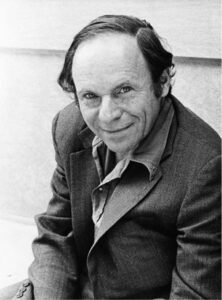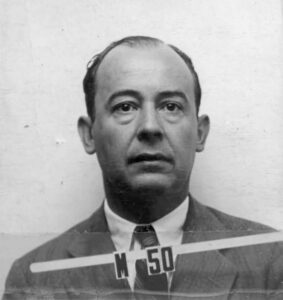Sep
11
They Are Here and They Call Themselves Hungarians
“… the cleverest man I ever knew, without exception.” — Jacob Bronowski on John von Neumann, The Ascent of Man
In the title above, “they” refers to extraterrestrial beings. Does that make the title sound silly or insulting to natives of Hungary? It was in fact supposed to be humorous and somewhat of a compliment. Here is the story, as told by Stephen Webb in If the Universe Is Teeming with Aliens… Where Is Everybody?.
— — —
Fermi would surely have been aware of one solution to the paradox even before he posed his question: it was a joke that used to do the rounds at Los Alamos.

The joke originated at Los Alamos in 1945 or ’46, when the American physicist Phil Morrison made up a tale of how Martians were planning — should the need ever arise — to occupy Earth. Morrison realized that a Martian invasion of Earth would be an even more difficult task than the recent Allied invasion of Normandy. So how would they go about it? Morrison argued that Martians would take the long view and spend a millennium or two getting to know the place, and he presented a number of reasons why Hungary would be their beachhead.
To be successful in their long-term surveillance activities the Martians would have to pass themselves off as human and, clearly, they had been extremely successful in hiding their evolutionary differences — except for three traits. The first trait was wanderlust: this found its outlet in the Hungarian gypsy. The second was language: Hungarian is unrelated to any of the Indo-European languages spoken in the neighboring countries of Austria, Croatia, Romania, Serbia, Slovakia, Slovenia and Ukraine. The third was intelligence: their brainpower was beyond that of mere humans. A few years later, by the time Fermi asked his question, Morrison’s tale had become a whimsical story often repeated within the Theoretical Division at Los Alamos. As the joke went: “they are among us and they call themselves Hungarians”.
Unfortunately for the theory, many peoples have exhibited wanderlust at some point in their history; and the Hungarian language is hardly unique, related as it is to Finnish, Estonian and some languages spoken in Russia. But that third trait was in evidence during the Manhattan Project: Fermi’s colleagues included Leo Szilard, Edward Teller, Eugene Wigner and John von Neumann. All four had been born in Budapest within ten years of each other. Another native of Budapest who made a major contribution to the war effort was Theodore von Kármán, but he was born slightly before the others. These “Martians” certainly constituted a formidable array of intellect: the physicist Szilard made contributions in several fields; Teller went on to be the prime mover behind the development of thermonuclear weapons; Wigner won the 1963 Nobel prize in physics for his work in quantum theory; and von Kármán’s aerodynamics research led to the design of the first supersonic aircraft. Easily the most brilliant of the Martians, though, was von Neumann.

John von Neumann, whom we shall meet again later in the book, was one of the outstanding mathematicians of the 20th century. He developed the discipline of game theory, made fundamental contributions to quantum theory, ergodic theory, set theory, statistics and numerical analysis, and gained fame when he helped develop the first flexible stored-program digital computer. Toward the end of his career he was a consultant to big business and the military, allotting time to various projects as if his brain were a time-share mainframe computer. His ability to calculate in his head the answers to mathematical problems was legendary — he routinely beat Fermi whenever the pair had a calculating contest — and his near-photographic memory just added to an aura of unearthly intelligence.
He possessed other talents that chimed nicely with the “Hungarians are aliens” story. “Good-Time Johnny” imbibed large amounts of alcohol at Princeton parties with seemingly no detriment to his mental faculties. He was involved in road traffic accidents at an alarming rate — one junction in Princeton was known as “von Neumann Corner” after the number of accidents he caused there — yet he always walked away unscathed. (The natural conclusion is that alcohol impaired his driving, but there’s no clear evidence that this was the case; he seems just to have been a bad driver.)
Nevertheless, even the “cleverest man in the world” sometimes got it wrong. Although von Neumann played a pivotal role in the development of the digital computer, and has thus affected our lives in a way that few other mathematicians have ever done, he apparently thought that computers would always be huge devices, useful only for building thermonuclear bombs and controlling the weather. He failed completely to foresee a day when manufacturers would embed computers in everything from toasters to tumble dryers. Surely a real Martian would have known better.”
— — —
Fun story, eh? And quite the braintrust they had at Los Alamos, especially the impressive contingent from Hungary! Incidentally, Phil Morrison was born in New Jersey, not far from where I grew up, but he was a bit smarter. He is also considered one of the godfathers of the SETI project.















